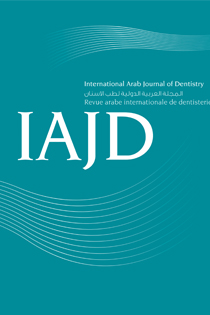Abstract
This study evaluated the effect of three types of light curing systems (quartz tungsten halogen, light emitting diode and softstart curing light) on three types of dental adhesives (Xeno® III, Prime and bond® NT™ and Unibond II).
Sixty freshly extracted sound bicuspid teeth were used; two standardized cavities were created on the middle third of the buccal and lingual surfaces of each tooth. After storage for one day in normal physiological saline at 37ºC, teeth were divided into four groups of fifteen teeth each. The three selected bonding and filling agents, as well as curing systems were applied according to the manufacturers’ instructions. The first group was considered as a control (without bonding agent) and cured by three different curing systems. The second, third and fourth groups were treated with one of the adhesive agents. Then all groups were coated with nail varnish and immersed in 2% aqueous solution of methylene blue dye for 24 hours, then washed, sectioned and scored under light microscope.
The microleakage at the resin-based composite (Filtek™ Z250, 3M, ESPE) – tooth interface was assessed.
Soft-start light-curing mode showed the lowest microleakage values among the curing modes, while the quartz tungsten halogen light curing revealed the highest values of microleakage in all types of bonding systems. Concerning the dental adhesives, the lowest microleakage values were observed when the Unibond II was used whereas Xeno III® exhibited the highest degree of microleakage.

